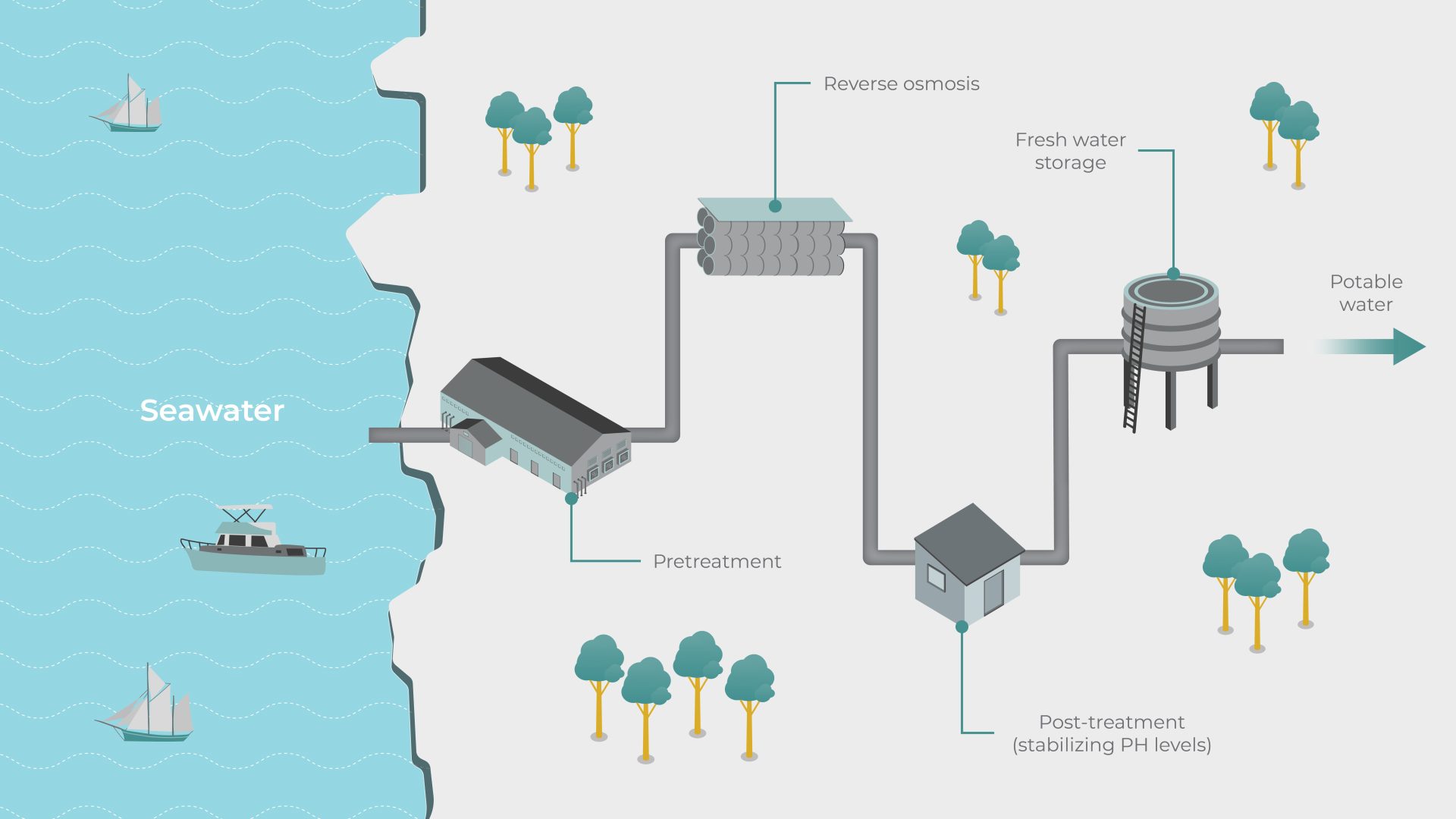
The global population is rapidly increasing in tandem with a worldwide water shortage. 1.1 billion people currently lack access to water and approximately 2.7 billion people experience water scarcity for at least one month per year.
In response to this global issue, water companies across the world are considering how they can optimize water management and preserve the finite resource, with desalination gaining momentum as a method of increasing access to fresh water.
What is desalination?
Desalination is the process of removing mineral salts (or saline) from water, usually through a process called reverse osmosis which involves using high pressure to pass seawater over a membrane which filters out the minerals and other contaminants, creating desalinated water.
Recently, South West Water announced plans to introduce a desalination plant in Cornwall. Cornwall is a tourist destination so desalinated water would provide a top up to the water supply during peak tourist season. As part of a phased approach, South West Water will be starting with a smaller desalination plant that will produce between 2.5 and 5 million liters of water per day before building a larger plant that will deliver 20 million liters of water per day.
The benefits
In the face of increased risk to water security, desalination effectively produces a new water source that can be turned on or off depending on the needs of the water utility. For example, South West Water’s desalination plant will provide a top up during peak tourist season. Desalinated water can also help end cycles of drought and reduce the need for utilities to impose hosepipe bans, however it’s not a process without its challenges.
The challenges
The production process for desalinated water is often energy-intensive. Not only that, but intakes for desalinated water pose a threat to marine life, with the State Water Resources Control Board estimating that coastal power plants in California kill 70 billion fish larvae and other marine life every year when surface seawater is sucked into intake pipes.
Desalination is also a costly process due to the high energy consumption associated with water production, the maintenance and repair of desalination and equipment, the chemicals and consumables for the pre-treatment, cleaning and maintenance of membrane, staffing costs, brine disposal and more.
Considering the environmental implications and overheads associated with a desalination plant, water companies beginning to introduce them should prioritize installing a leak detection system to ensure the process is more cost effective, climate conscious and reduces the loss of processed water. Investment in desalination plants will increase bills for water customers too, so a leak detection system will better safeguard that investment and reduce the environmental, financial and reputational costs associated with leaks.
Optimizing desalination with pipeline leak detection
Once desalinated water is produced, it typically ends up in the same pipeline as water treated from reservoirs, which are also subject to leaking. Installing pressure and flow instrumentation – with options for non-intrusive data collection – allows data to be collected for leak detection processing. Instrumentation can also use embedded wave processing, acoustic noise analysis, collect pipeline data and have multiple communication options available.
Analysis of the data can be performed at the Edge, with data packets linked to alarmed leak events being sent out following the onset of new leaks forming as well as at predetermined schedules.
The added element of analysis by human engineers with years of experience and training in the latest technologies can detect leaks that would otherwise go unnoticed by a SCADA system. Using this approach alongside hardware and software gives better accuracy, higher speed and confidence in detecting leaks while maintaining a highly sensitive leak detection system without the distraction of false alarms.



